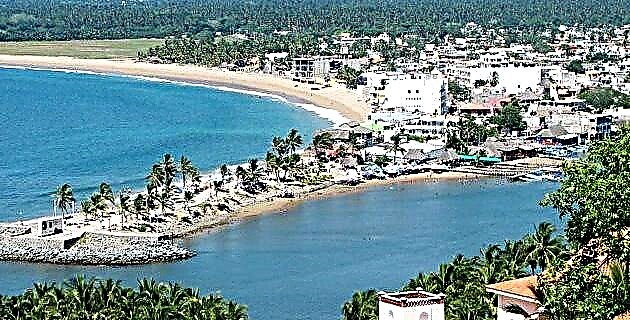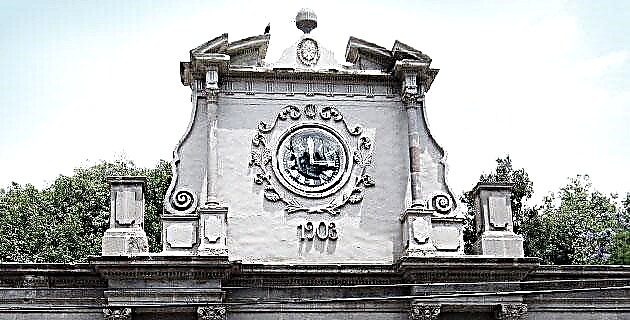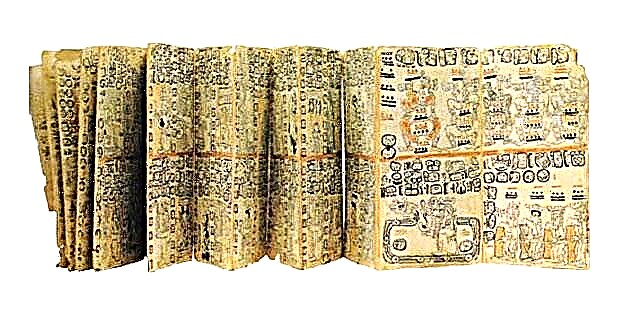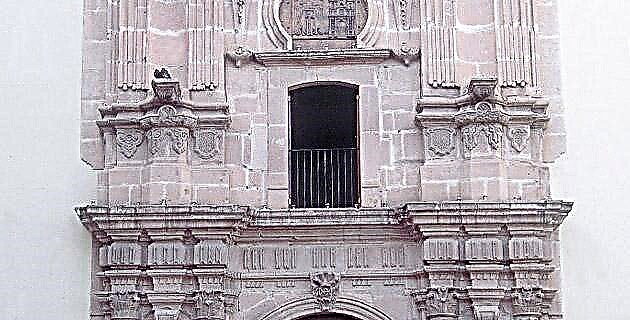
The construction of the Colegio de San Ignacio de la Compañía de Jesús in Durango - which today is standing and serves as the rectory of the Universidad Juárez del Estado de Durango (UJED) - dates from the second half of the 18th century; more exactly, the process of its construction covers the years from 1748 to 1777.
Its importance is singular, since it was the most developed viceregal educational institution in the entire north of New Spain and in it the secular clergy and the intelligentsia of the Neo-Vizcaya province were formed. The construction of the Colegio de San Ignacio de la Compañía de Jesús in Durango dates from the second half of the 18th century; More precisely, the process of its construction covers the years from 1748 to 1777. Its importance is singular, since it was the most developed viceregal educational institution in the entire north of New Spain and in it the secular clergy and intelligentsia of Neovizcaína province.
Its history begins in the year 1596, when parents Francisco Gutiérrez, superior, Gerónimo Ramírez, perhaps Juan Agustín de Espinoza, Pedro de la Serna and the brothers Juan de la Carrera and Vicente Beltrán came to occupy the property that today comprises the central building of the UJED, the temple of Our Lady of San Juan de los Lagos, the adjoining building and the Plaza IV Centenario.
It is very likely that taking advantage of the advantages that the new headquarters offered them, the teaching of first letters and grammar courses has begun to be more regular and sustained. However, the foundation was not possible until the late seventeenth century, due to the slow and weak demographic and urban growth of the town of Guadiana.
The endowment year of the Guadiana College took effect in 1634. Canon Francisco de Rojas y Ayora donated the Hacienda de La Punta with everything and its assets, plus 15 thousand pesos, on condition that he was recognized as the founder and patron of said College until the end of its days and, above all, that: with charge and obligation that said religion has to read in said College perpetually grammar and its superiors must continually put religious teachers for it and they must have and be They must keep a school teacher forever, as he is today, so that he can teach and teach the Youth of the said city of Guadiana and its party, and be careful that a lesson on cases of conscience must be read in the said College, for the spiritual and temporal utility of that land, its jurisdiction, miners and inhabitants of it.
From that moment on, the academic activities of the Colegio de Guadiana would be permanent and would tend to develop.
In 1647 the collapse of the church of the Company occurred. Given the lack of resources, the reconstruction began until 1660, under the rector of Juan de Monroy, who obtained an alms of 22 thousand pesos, with which he began from the foundations and left the beautiful factory of the city at the height that today is seen. A church that only seems to have engraved on its columns the “non plus ultra” that in so many years not a single stone has been superimposed. However, it remained unfinished, and remained so until the middle of the 18th century.
By the end of the seventeenth century, the Colegio de Guadiana had entered into the clear definition of being the institution that trains the clergy of the Diocese of Durango and educates the laity of the province of Neo-Vizcaya. The incorporation of the Seminary of the Diocese of Durango to the College of Guadiana took place on May 14, 1721, for which, after the necessary provisions were made, an annex building was built.
By the end of the 1930s, concern about the lamentable state in which the Guadiana College was found began to be manifest, to such an extent that the segregation of the Seminary was proposed, since it was considered that there were only material losses . The Jesuit building -probably the one they had acquired since 1596-, according to one of the fathers who inhabited it in 1739: It is made of adobes, low and damp rooms of 10 years in this part, with much damage that has been experienced in the cases of our neighborhood.
In a 1747 report it is said that at that time nothing had been done to improve the building or the church. The description of the College building is pathetic: walls about to collapse, roofs with jets, no leaks, every time it rained; patios and floors in total ruin, that if we do not intervene in their repair "we judge, they said, that in a very few years the College will be ruined."
Finally, it was decided to begin the reconstruction work of the Colegio and Iglesia de la Compañía in 1748. What was lacking was money, since only 7 thousand pesos were required for the start-up, but there were well-founded hopes that up to 12 thousand pesos could be raised. with the help of people from Chihuahua, Sombrerete, Parral, and other places in the bishopric from which the students came.
The question of how far the reconstruction of the College and the church followed the previous architectural structure is something very difficult to determine in the absence of plans of the time. However, based on the known documentary descriptions, in general terms we can affirm that a similar pattern was followed, except for the beautifully finished doorways in the Baroque style, the sober arches on the lower floor of the central patio and the walled-up walls. from the top.
Nor do we have news who was the architect or the teacher who directed such a magnificent work. In the information after the beginning of the reconstruction, the new building was made of carved stone and quarry, and not of adobe as it was before; Bishop Tamarón y RomeraI, in the description that he made of the College in 1765, refers only to the academic aspect, which by the way accounts for a great activity due to the large number of students it attended. Maybe the rebuilding work was on hold or you didn't think it was important to register them.
After the expulsion of the Jesuits, in 1767, the Colegio de San Ignacio de Ia Compañía de Jesús and its assets began to be administered by the Junta de Temporalidades, but in the particular case of Durango, the governor of the province, José Carlos de Agüero, ordered that it pass to the power of the ecclesiastical council, and therefore to the Conciliar Seminary. It was Bishop Antonio Macaruyá y Minguilla de Aquilanín who gave him the last push. When he arrived in Durango at the beginning of 1772, the bishop found the work interrupted, and perhaps because he belonged to the Mitra, he put a special interest in continuing the work until its conclusion. The College was finished rebuilding in 1777, and the church, which had been demolished shortly before the Jesuit expulsion; it resurfaced in 1783 as the vice-parish of EI Sagrario - at a cost of 40,300 pesos paid by the Mitra of Durango.











